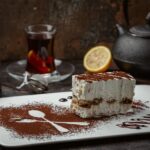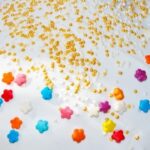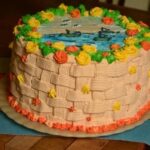Are you looking to add a touch of creativity and dimension to your cakes? Learn how to make 3D cake decorations and elevate your baking game with stunning edible art. From fondant cake toppers to modeling chocolate creations, the possibilities are endless when it comes to decorating your cakes in three dimensions.
In this comprehensive guide, we will delve into the fundamentals of 3D cake decorations, equipping you with the essential knowledge and skills needed to master this art form. Whether you’re a baking enthusiast or a professional pastry chef, understanding the basics is crucial in creating visually appealing and delicious cakes that stand out from the rest.
We’ll start by exploring the necessary tools and supplies for making 3D cake decorations, followed by a discussion on selecting the right ingredients for edible cake decorations. Then, we’ll take you through a step-by-step guide on creating intricate fondant cake toppers and using modeling chocolate to bring your designs to life.
Additionally, we’ll provide invaluable tips and tricks for making elaborate 3D cake decorations and troubleshoot common issues that may arise during the process. So, let’s get started on this exciting journey of mastering the art of 3D cake decorations.
Essential Tools and Supplies for Making 3D Cake Decorations
When it comes to making 3D cake decorations, having the right tools and supplies at your disposal is essential. Whether you’re working with fondant, modeling chocolate, or other edible materials, using the proper equipment can make the process much easier and more enjoyable. Here are some essential tools and supplies to have on hand when making 3D cake decorations:
– **Rolling Pin**: A good quality rolling pin is a must-have for working with fondant or modeling chocolate. Look for one with a smooth, non-stick surface to ensure your materials roll out evenly.
– **Decorating Tools**: Invest in a set of decorating tools specifically designed for creating 3D cake decorations. These may include various molds, cutters, shaping tools, and veining tools to add intricate details to your designs.
– **Edible Glue or Royal Icing**: To help pieces stick together and adhere to the cake, having edible glue or royal icing on hand is crucial. This will ensure that your decorations stay in place and look seamless once applied to the cake.
– **Paintbrushes**: Fine-tipped paintbrushes are useful for adding painted details or applying edible dusts and colors to your 3D decorations. Make sure they are food-safe and dedicated solely for use with edible materials.
– **Supporting Structures**: Depending on the complexity of your 3D cake decorations, you may need supporting structures such as toothpicks, skewers, or even internal dowels for larger pieces. These will help keep your decorations stable and secure on the cake.
By ensuring you have these essential tools and supplies in your baking arsenal, you’ll be well-equipped to create stunning 3D cake decorations that will impress any audience. Whether you’re a novice decorator or an experienced baker, having reliable equipment can make all the difference in achieving professional-looking results.
Choosing the Right Ingredients for Edible Cake Decorations
The success of creating beautiful and delicious 3D cake decorations heavily relies on choosing the right ingredients. When it comes to edible cake decorations, using high-quality ingredients is essential to achieve both aesthetic appeal and great taste. The first key ingredient for making edible cake decorations is fondant.
Fondant is a popular choice for 3D cake decorations as it can be easily molded into different shapes and designs. It is important to use fondant that has a smooth texture and is easy to work with.
Another important ingredient for edible cake decorations is gum paste. Gum paste is similar to fondant but has a firmer texture, making it ideal for creating intricate details such as flowers, figurines, and other delicate designs. When choosing gum paste, look for one that is pliable, dries quickly, and hardens well.
In addition to fondant and gum paste, food coloring plays a crucial role in creating vibrant and eye-catching cake decorations. Gel-based food colors are recommended as they provide intense hues without watering down the consistency of the fondant or gum paste. It’s important to select food colors that are specifically formulated for use in decorating edible creations.
| Ingredient | Considerations |
|---|---|
| Fondant | Smooth texture, easy to work with |
| Gum Paste | Pliable, quick-drying, hardens well |
| Food Coloring | Gel-based for intense colors without altering consistency |
Step-by-Step Guide
Preparing Your Workstation
Before you start working with fondant, it’s essential to ensure that your workstation is clean and free from any debris. Dust your work surface with powdered sugar or cornstarch to prevent the fondant from sticking. Additionally, make sure you have all the necessary tools and supplies within reach, such as rolling pins, cutting tools, and edible coloring.
Rolling and Shaping the Fondant
Start by kneading the fondant until it becomes soft and pliable. Once the fondant is ready, dust your work surface and rolling pin with powdered sugar or cornstarch to prevent sticking. Roll out the fondant to your desired thickness, depending on the shape and size of your cake topper. Use cookie cutters or sharp knives to cut out the desired shapes for your 3D decorations.
Assembling the Cake Toppers
Once you have cut out the individual pieces for your 3D cake decorations, it’s time to assemble them. If you are creating multi-layered or intricate designs, use a small brush dipped in water or edible glue to attach the different fondant pieces together. You can also add additional details using edible coloring, food-safe markers, or edible shimmer dust for a touch of sparkle.
By following these step-by-step instructions for creating 3D fondant cake toppers, you can elevate your cake decorating skills and impress your friends and family with stunning edible works of art. With practice and creativity, you can master the art of making intricate and beautiful 3D cake decorations that will undoubtedly take your cakes to the next level.
Using Modeling Chocolate to Create 3D Cake Decorations
Modeling chocolate is a versatile and delicious medium for creating intricate 3D cake decorations. Made from a mixture of melted chocolate and corn syrup, modeling chocolate can be molded and sculpted into various shapes and designs to adorn your cakes. Here are some essential tips and techniques for using modeling chocolate to create stunning 3D cake decorations:
1. Choose the Right Type of Chocolate: When making modeling chocolate, it’s important to use high-quality chocolate that has a good flavor and smooth texture. Dark, milk, or white chocolate can be used depending on the desired color of the decorations. Be sure to avoid using low-quality or compound chocolates as they may not set properly or have an unpleasant taste.
2. Working with Modeling Chocolate: Once the modeling chocolate has been prepared and cooled, it should be kneaded until pliable before use. It’s important to work with small amounts at a time, as modeling chocolate can become stiff if handled for too long. If the chocolate becomes too warm and soft during shaping, simply refrigerate it until firm again.
3. Creating Intricate Designs: Modeling chocolate can be rolled out like fondant and then cut, shaped, or molded into various decorative elements such as flowers, figurines, or intricate patterns. It can also be used to cover cakes entirely or to create textured surfaces for a unique finish.
By mastering the art of using modeling chocolate for 3D cake decorations, you can add an extra layer of creativity and artistry to your baked creations. Whether you’re making simple shapes or elaborate designs, modeling chocolate offers endless possibilities for bringing your cake decorating ideas to life. With practice and patience, you’ll soon be able to create stunning 3D cake decorations that will impress your friends, family, and clients alike.
Tips and Tricks for Making Intricate 3D Cake Decorations
When it comes to creating intricate 3D cake decorations, there are a few tips and tricks that can help take your cake decorating game to the next level. Whether you’re working with fondant, modeling chocolate, or any other edible medium, paying attention to the details is key. Here are some helpful tips for making intricate 3D cake decorations.
Plan Ahead and Sketch Your Design
Before you start creating your 3D cake decorations, it’s helpful to have a clear plan in mind. Take some time to sketch out your design on paper, taking into consideration the size and shape of your cake. Planning ahead will help ensure that your decorations fit well on the cake and complement the overall design.
Use Templates and Molds
For more complex shapes and designs, using templates or molds can be incredibly helpful. You can find a variety of templates and molds online or at baking supply stores. These tools can help you create consistent shapes and intricate details with ease.
Patiently Work in Layers
When creating intricate 3D cake decorations, it’s important to work in layers. Whether you’re building a fondant sculpture or crafting a detailed figurine out of modeling chocolate, taking your time with each layer will lead to a more polished final result. Allow each layer to set or dry properly before adding additional details on top.
By following these tips and tricks, you’ll be well on your way to creating stunning and intricate 3D cake decorations that will impress both visually and taste-wise. Remember that practice makes perfect, so don’t be discouraged if your first attempts aren’t flawless. With time and patience, you’ll master the art of making beautiful 3D cake decorations for all your future bakes.
Showcasing Your 3D Cake Decorations
Once you have created stunning 3D cake decorations, it’s time to showcase them in a way that truly highlights their beauty. Presentation and display play a crucial role in making your creations stand out and leave a lasting impression. Whether you are making cake toppers, figurines, or intricate designs, how you present them can elevate the overall look of your cake.
One popular way to showcase 3D cake decorations is by using a simple yet elegant cake stand. A clear glass or acrylic stand allows the decorations to take center stage while providing support for the cake. By elevating the cake on a stand, it becomes a focal point of any dessert table or event.
Another important aspect of presentation is lighting. Proper lighting can enhance the details of your 3D cake decorations and make them more visually appealing. Consider using LED lights or strategically placing the cake in an area with natural light to ensure that all the intricate details are visible.
To further enhance the display of your 3D cake decorations, consider adding complementary elements such as fresh flowers, edible glitter, or decorative ribbons. These additional touches can tie in with the theme of the cake and create a cohesive look that will impress anyone who sees it.
| Aspect | Description |
|---|---|
| Cake Stand | Clear glass or acrylic stands work well |
| Lighting | Consider LED lights or natural light for optimal display |
| Complementary Elements | Add fresh flowers, edible glitter, or decorative ribbons for an enhanced look. |
Troubleshooting Common Issues When Making 3D Cake Decorations
When it comes to making 3D cake decorations, there can be a number of common issues that may arise during the process. Understanding how to troubleshoot these issues can help ensure that your final product is not only visually stunning but also structurally sound. Some of the most common problems when making 3D cake decorations include cracking or drying out of fondant or modeling chocolate, misshapen or lopsided creations, and difficulty in achieving intricate details.
One common issue when working with fondant or modeling chocolate for 3D cake decorations is cracking or drying out. This can happen if the materials are not properly kneaded and conditioned before use. To troubleshoot this problem, try adding a small amount of shortening to the fondant or modeling chocolate and kneading it in until it becomes more pliable. Additionally, ensure that your work surface is clean and smooth to prevent any unwanted textures from appearing on your decorations.
Another issue that may occur when creating 3D cake decorations is the challenge of achieving intricate details. Whether you are trying to create delicate flowers or miniature figurines, getting those fine details just right can be a struggle.
One way to troubleshoot this problem is to invest in high-quality tools specifically designed for detailing work, such as fine-tipped sculpting tools and precision cutters. Having the right tools at your disposal can make all the difference when it comes to achieving those intricate finishing touches on your 3D cake decorations.
Finally, misshapen or lopsided creations can be a frustrating issue when making 3D cake decorations. This can often occur if the structure of your creation is not properly supported during the drying process.
To troubleshoot this problem, consider using internal support structures such as toothpicks, skewers, or wire armatures to reinforce your decorations as they dry. Additionally, take care to handle your creations gently and avoid any unnecessary pressure that could cause them to become distorted before they have fully set.
By being aware of these common issues and knowing how to troubleshoot them effectively, you can overcome any challenges that may arise when making 3D cake decorations and create stunning edible works of art for your cakes.
Conclusion
In conclusion, mastering the art of 3D cake decorations can greatly enhance the visual appeal and overall presentation of your cakes. By understanding the basics, using the right tools and ingredients, and following a step-by-step guide, you can create stunning and delicious edible decorations that will impress your family, friends, or clients. Whether it’s fondant cake toppers or modeling chocolate creations, the possibilities for 3D cake decorations are endless.
With practice and perseverance, you can develop the skills needed to make intricate and eye-catching 3D cake decorations. It’s important to remember that patience is key when working with edible decorations, as they require attention to detail and precision. Additionally, showcasing your creations with thoughtful presentation and display will further elevate the visual impact of your cakes.
As with any creative endeavor, there may be some troubleshooting involved when making 3D cake decorations. However, by being aware of common issues and having the knowledge to address them, you can overcome any challenges that arise. Ultimately, mastering the art of 3D cake decorations opens up a world of creativity and adds a special touch to your baked goods that will leave a lasting impression on those who enjoy them.
Frequently Asked Questions
Can You Make Cake Toppers With a 3D Printer?
Yes, it is possible to make cake toppers with a 3D printer. By using food-safe materials and proper design software, intricate and personalized cake toppers can be created for any occasion.
Can You Make Edible Cake Decorations?
Yes, it is possible to make edible cake decorations. There are various methods for creating edible decorations such as using fondant, gum paste, edible ink printers, or even hand-piping designs onto the cake.
How Do You Make Cricut Cake Toppers?
To make Cricut cake toppers, you would typically design your desired shape or message on the Cricut Design Space software and cut it out using a Cricut machine on edible materials like gum paste or fondant. This allows for precise and intricate designs to be added to cakes for a personalized touch.

Welcome to my blog about home and family. This blog is a place where I will share my thoughts, ideas, and experiences related to these important topics. I am a stay-at-home mom with two young children. I hope you enjoy reading it! and may find some helpful tips and ideas that will make your home and family life even better!





